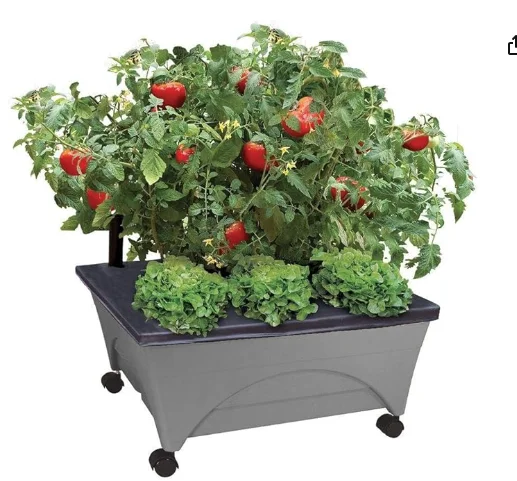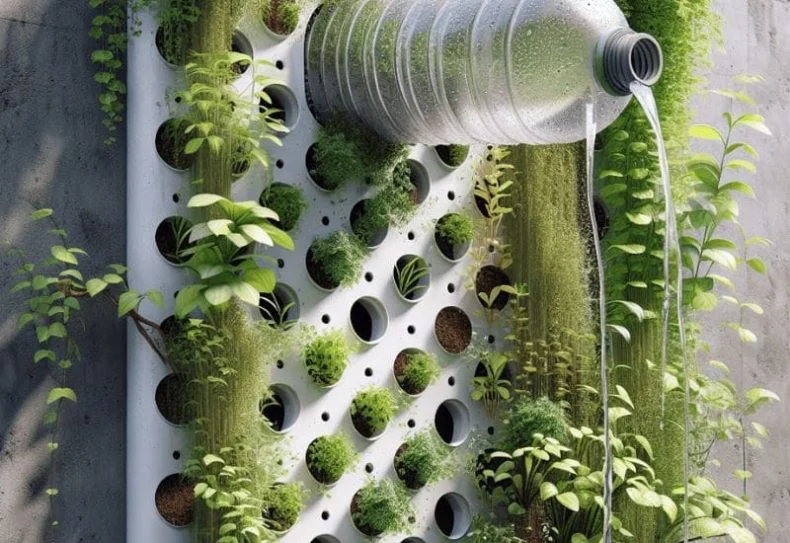What are the disadvantages of an indoor vertical garden?

Introduction
Hey there! Fellow gardeners,
Let’s talk about why having a garden that grows up instead of out might not be the best idea.
Even though it’s cool and saves space, there are some things to think about.
In this article, we’ll look at some of the not-so-good parts of vertical gardens, so everyone – whether you’re new to gardening or a pro – can learn something new!
The question is: What are the disadvantages of an indoor vertical garden?
Indoor vertical gardens, although visually appealing and space-saving, have several disadvantages that can impact plant growth and overall maintenance.
Let’s dive into the specific drawbacks of vertical gardening and how they can influence the success of your gardening planning.
Limited Soil Depth
Impact on Plant Growth
Vertical gardens, with their constrained soil depth, present unique challenges and opportunities for plant growth.
Despite the limitations, there are several factors that come into play when considering the impact on plant growth in vertical gardens:
- Root Expansion: In vertical gardens, the restricted space for root expansion can affect the overall development of plants. Limited room for root growth may lead to stunted growth and reduced nutrient absorption.
- Soil Drying: The limited soil depth in vertical gardens can contribute to quicker soil drying, increasing the demand for frequent watering and careful nutrient management to sustain plant health.
- Nutrient and Water Access: The vertical environment introduces challenges for plants in accessing essential nutrients and water. This can impact their overall health and vigor.
- Adaptability of Plant Species: Certain plant species may be better suited for vertical gardens, displaying greater adaptability to limited soil depth and other environmental factors.
Maintenance Challenges
Watering and Nutrient Management
Vertical gardens require special attention and unique watering techniques due to the reduced soil volume.(see water techniques)
The limited soil capacity can lead to water stress in plants, making it essential to implement careful and precise watering methods.
Additionally, nutrient considerations in vertical gardens differ significantly from conventional gardens.
The shallow soil may deplete nutrients at a faster rate, necessitating a thorough nutrient management plan to ensure sustained healthy plant growth.
As a result, the fertilization schedule for vertical gardens needs to be more frequent and meticulously planned to provide adequate nutrients for the plants.
- Different Watering Techniques for Vertical Gardens
- Distinct Nutrient Considerations in Vertical Gardens
- Revised Fertilization Schedule for Vertical Gardens
Pest and Disease Control
Indoor vertical gardens present unique challenges for pest and disease control due to the confined indoor environment.
It is crucial to implement proactive pest control measures and regular monitoring to prevent infestations and diseases that can spread quickly in the limited space of indoor vertical gardens.
- Regularly inspect the indoor plants for signs of pests and diseases
- Introduce beneficial insects as a natural form of pest control for indoor vertical gardens
- Use organic pesticides and fungicides specifically formulated for indoor use to minimize harm to the indoor environment
Limited Plant Selection

Self-watering Pots
Species Suitability
When it comes to selecting plant species for vertical gardens, it is crucial to consider the specific requirements and limitations of this unique gardening environment.
This applies to both outdoor and indoor vertical gardens. The choice of plant species is influenced by factors such as available soil depth, light exposure, and growing conditions.
Unlike traditional gardens, vertical structures impose constraints that limit the diversity of plant selections, whether they are outdoors or indoors.
However, with careful consideration and planning, vertical gardens, including indoor ones, can still offer a beautiful array of thriving plant species.
Here are some key points to keep in mind when determining the suitability of plant species for both outdoor and indoor vertical gardens:
- Adaptability: The selected plant species must be adaptable to the confined environment of vertical gardens, including limited soil depth and exposure to different light levels, whether in an outdoor or indoor setting.
- Growth Habit: Consider the growth habit of the plant, including its natural tendency to trail, cling, or stand upright, to ensure a suitable fit for vertical gardening structures, whether indoors or outdoors.
- Soil Requirements: Assess the soil requirements of the plant species to ensure that it can thrive in the available soil depth of vertical gardens, whether they are indoor or outdoor.
- Light Tolerance: Different plant species have varying light tolerance levels, so it is essential to select species that can adapt to the light conditions of vertical environments, whether they are indoors or outdoors.
- Water Needs: Understanding the water needs and irrigation requirements of plant species is critical for maintaining healthy growth in vertical gardens, regardless of whether they are indoors or outdoors.
By carefully considering these factors, gardeners can select suitable plant species that will thrive within the limitations of both outdoor and indoor vertical structures, ultimately creating stunning and sustainable vertical garden displays.
Structural Limitations
Weight and Stability
The construction and stability of vertical garden structures are crucial considerations, especially when dealing with larger and heavier plant displays.
Ensuring that the support framework can withstand the weight of the plants and soil is essential to prevent structural failure and potential safety hazards.
Proper planning and construction are necessary to maintain the stability and integrity of vertical gardens.
Conclusion
After looking at why vertical gardening isn’t perfect, we see that it does save space and looks nice, but there are also some big problems to deal with.
These problems include not having enough soil for plants to grow deep roots, dealing with maintenance issues, and choosing the right plants.
It’s important for gardeners to know about these challenges so they can have a successful garden that lasts.
By thinking about these issues and finding ways to solve them, gardeners can make their vertical gardens thrive.

